The Marine Corps Combat Fitness Test (CFT) is a rigorous assessment designed to evaluate the physical stamina and combat readiness of Marines. Recently, Air Force personnel from the 913th Airlift Group (AG) at Little Rock Air Force Base, Arkansas, took on this challenge, showcasing their dedication to fitness and inter-service camaraderie. Donning their own version of battle dress uniform, these Airmen pushed their limits in a test typically reserved for the Marine Corps.
What exactly is the Marine Corps Battle Dress Uniform (BDU) and why is it significant in the context of the CFT? While the Air Force personnel in the event wore their standard Air Force uniforms, understanding the Marine Corps BDU provides context to the rigorous physical standards being tested. The Marine Corps BDU, also known as the Marine Corps Combat Utility Uniform (MCCUU), is more than just clothing; it’s a symbol of Marine identity and preparedness. Designed for durability and functionality in diverse combat environments, the MCCUU is built to withstand harsh conditions and support peak physical performance. Its camouflage patterns are specifically designed for operational effectiveness, and the uniform itself is constructed to allow for a full range of motion, crucial for the physically demanding tasks Marines undertake.
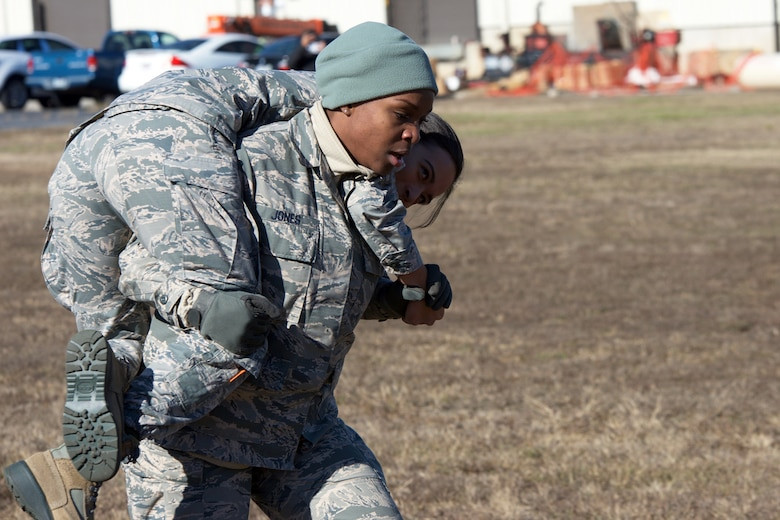 U.S. Air Force Reserve Tech Sgt. Brittney Jones, in her Air Force battle dress uniform, executes a casualty evacuation during the Marine Corps Combat Fitness Test, highlighting the physical demands assessed by the CFT.
U.S. Air Force Reserve Tech Sgt. Brittney Jones, in her Air Force battle dress uniform, executes a casualty evacuation during the Marine Corps Combat Fitness Test, highlighting the physical demands assessed by the CFT.
The Marine Corps CFT itself is composed of three physically demanding events, all performed while wearing a battle dress uniform. These events are designed to simulate the physical challenges encountered in combat scenarios:
-
Movement to Contact (880-yard sprint): This timed sprint assesses the participant’s aerobic capacity and speed over a middle distance, crucial for rapid deployment and movement on the battlefield.
-
Ammunition Can Lift: In this event, participants repeatedly lift a 30-pound ammunition can overhead from shoulder height for two minutes. This tests muscular endurance in the shoulders and arms, simulating the repetitive lifting and loading tasks common in combat situations.
-
Maneuver Under Fire: This is the most complex and arguably the most grueling part of the CFT. It’s a timed 300-yard shuttle run that incorporates a series of physically demanding tasks:
- High and Low Crawls: Simulating movement under fire and through varied terrain.
- Evading Obstacles: Testing agility and the ability to navigate obstacles while maintaining speed.
- Casualty Evacuation: Participants must drag or carry a simulated casualty, emphasizing strength and teamwork.
- Ammo Can Carry: Further testing strength endurance while moving.
- Simulated Grenade Throw: Assessing upper body power and coordination for combat-related tasks.
- Simulated Stretcher Carry: Another element of casualty evacuation, demanding teamwork and physical coordination under pressure.
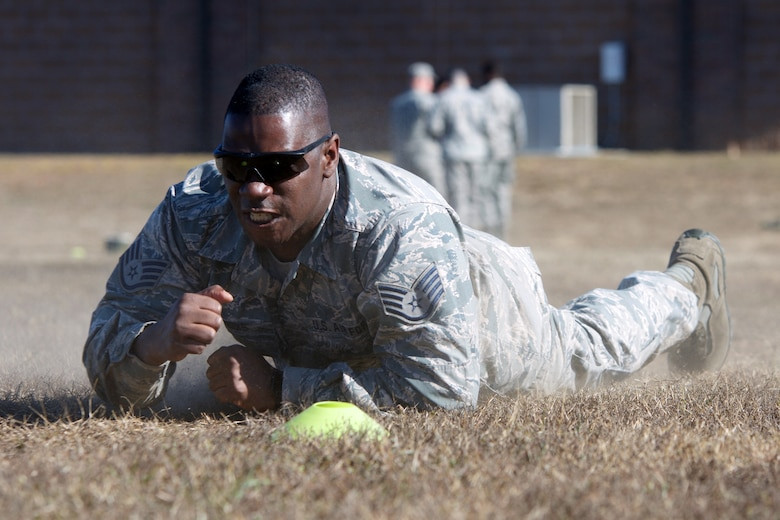 U.S. Air Force Reserve Staff Sgt. Bryan Cheeks, wearing his battle dress uniform, low crawls during the maneuver-under-fire portion of the Marine Corps Combat Fitness Test, demonstrating agility and combat readiness.
U.S. Air Force Reserve Staff Sgt. Bryan Cheeks, wearing his battle dress uniform, low crawls during the maneuver-under-fire portion of the Marine Corps Combat Fitness Test, demonstrating agility and combat readiness.
For the Air Force Reservists of the 913th AG, participating in the Marine Corps CFT was a unique opportunity to test their physical fitness against a different service’s standards. While their daily roles may differ from those of frontline Marines, the need for robust physical conditioning remains paramount in the military. Events like this CFT competition not only promote individual fitness but also foster a deeper understanding and respect between different branches of the U.S. Armed Forces.
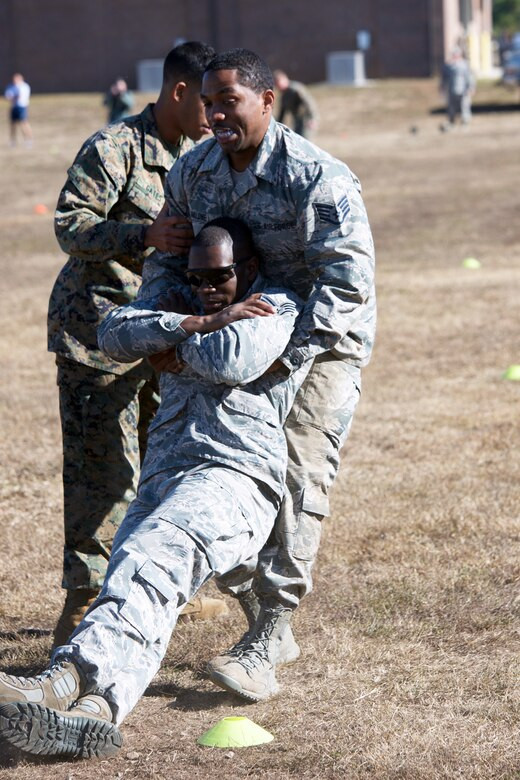 U.S. Air Force Reserve Staff Sgt. Corey Malone, in battle dress uniform, executes a casualty evacuation during the CFT, highlighting the strength and endurance required by the test.
U.S. Air Force Reserve Staff Sgt. Corey Malone, in battle dress uniform, executes a casualty evacuation during the CFT, highlighting the strength and endurance required by the test.
The willingness of these Airmen to undertake the Marine Corps Combat Fitness Test, in their own battle dress uniform, underscores the shared commitment to physical excellence across the U.S. military. It highlights the demanding nature of military service and the continuous effort required to maintain peak readiness, regardless of branch. This event serves as a testament to the dedication and physical prowess of U.S. Air Force Reserve personnel and their ability to rise to any challenge, even those set by their Marine Corps counterparts.
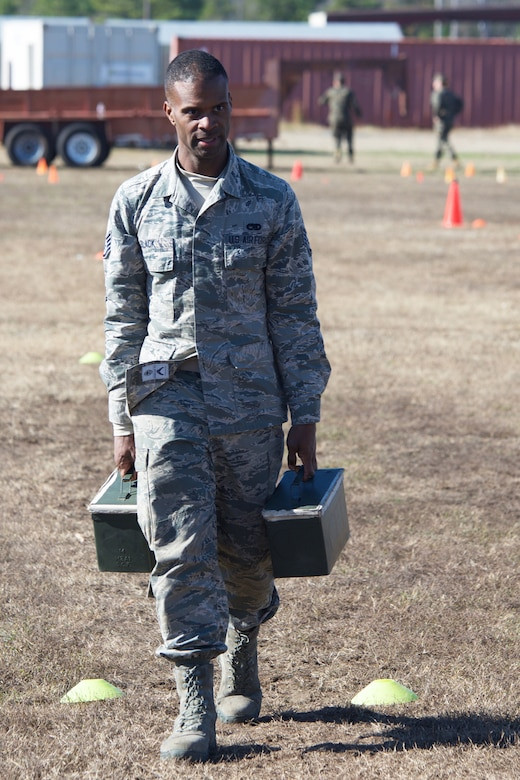 U.S. Air Force Reserve Staff Sgt. Caleb Black, in his Air Force battle dress uniform, sprints with ammo cans during the Marine Corps Combat Fitness Test, showcasing speed and strength endurance.
U.S. Air Force Reserve Staff Sgt. Caleb Black, in his Air Force battle dress uniform, sprints with ammo cans during the Marine Corps Combat Fitness Test, showcasing speed and strength endurance.
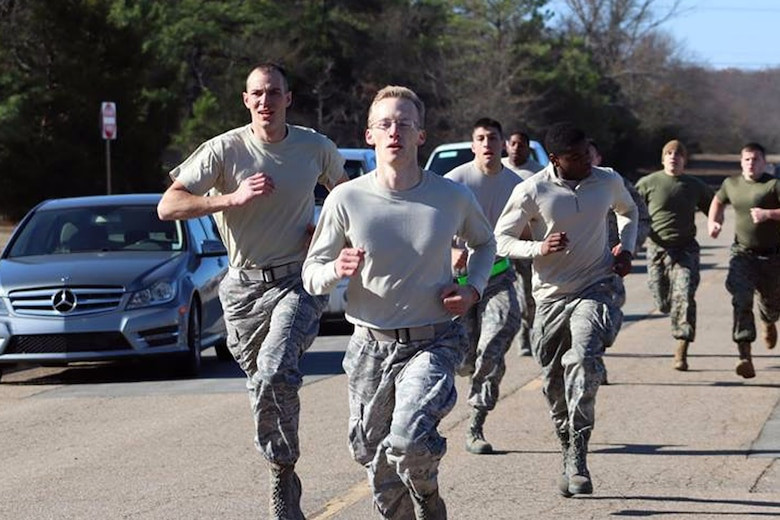 U.S. Air Force Reserve Staff Sgt. Kevin Mailhiot, wearing his battle dress uniform, competes in the 880-yard sprint of the Marine Corps CFT, emphasizing cardiovascular fitness and speed.
U.S. Air Force Reserve Staff Sgt. Kevin Mailhiot, wearing his battle dress uniform, competes in the 880-yard sprint of the Marine Corps CFT, emphasizing cardiovascular fitness and speed.
 U.S. Air Force Reserve Staff Sgt. Corey Malone, in his battle dress uniform, throws a simulated grenade during the CFT, demonstrating upper body strength and coordination.
U.S. Air Force Reserve Staff Sgt. Corey Malone, in his battle dress uniform, throws a simulated grenade during the CFT, demonstrating upper body strength and coordination.
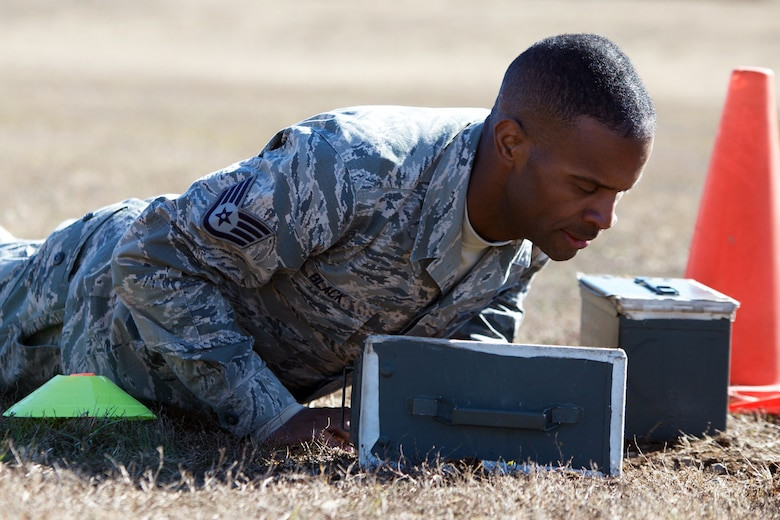 U.S. Air Force Reserve Staff Sgt. Caleb Black, in battle dress uniform, performs push-ups during the obstacle course portion of the CFT, highlighting upper body strength and endurance.
U.S. Air Force Reserve Staff Sgt. Caleb Black, in battle dress uniform, performs push-ups during the obstacle course portion of the CFT, highlighting upper body strength and endurance.
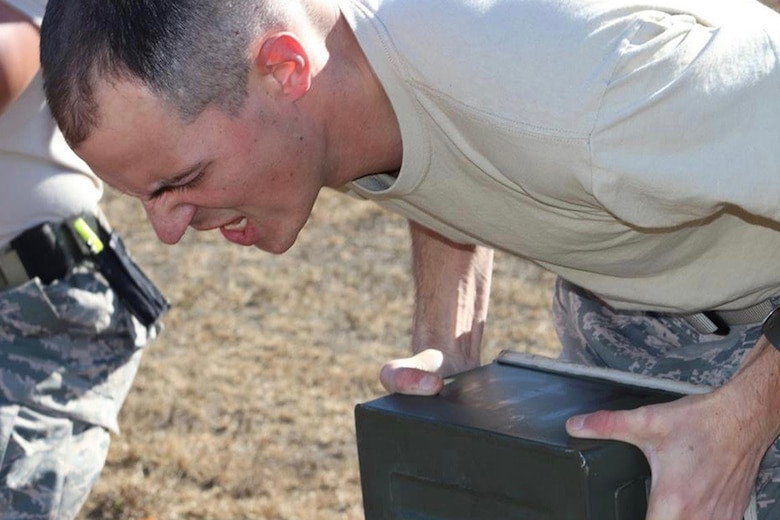 U.S. Air Force Reserve Staff Sgt. Kevin Mailhiot, in his Air Force battle dress uniform, lifts a 30-pound ammunition can during the CFT, showcasing strength endurance.
U.S. Air Force Reserve Staff Sgt. Kevin Mailhiot, in his Air Force battle dress uniform, lifts a 30-pound ammunition can during the CFT, showcasing strength endurance.
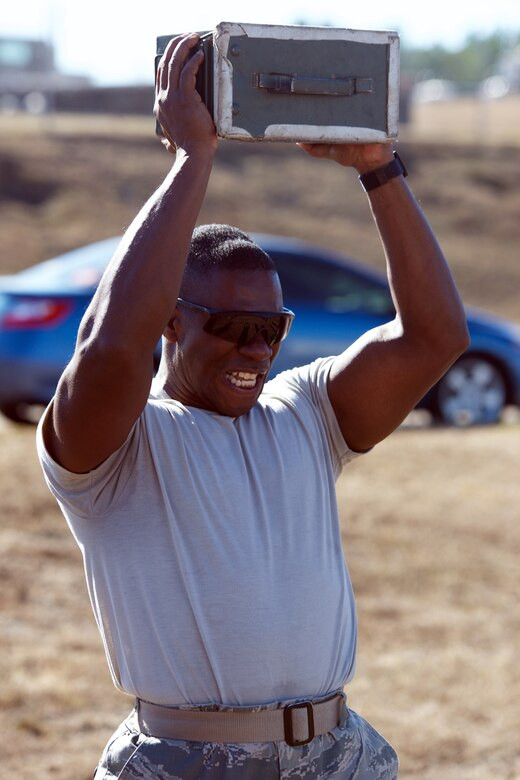 U.S. Air Force Reserve Staff Sgt. Bryan Cheeks, wearing his battle dress uniform, repeatedly lifts an ammunition can overhead during the Marine Corps Combat Fitness Test, testing muscular endurance.
U.S. Air Force Reserve Staff Sgt. Bryan Cheeks, wearing his battle dress uniform, repeatedly lifts an ammunition can overhead during the Marine Corps Combat Fitness Test, testing muscular endurance.

